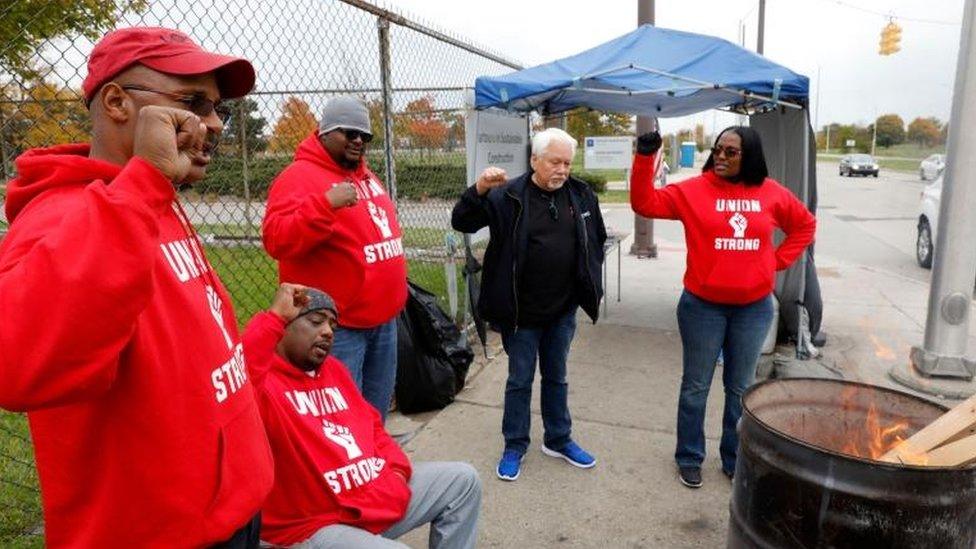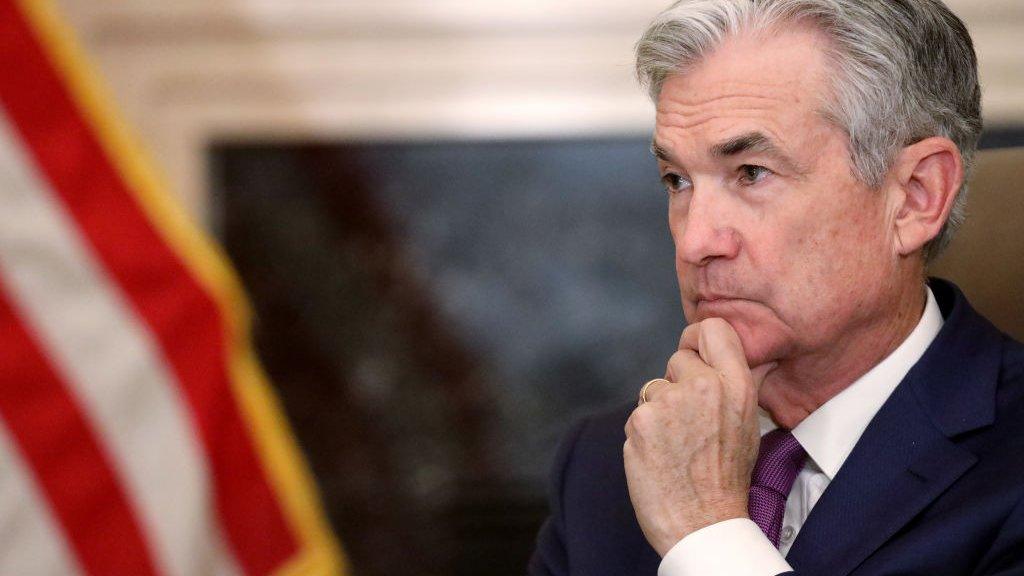US jobs growth beats forecasts despite GM strike impact
- Published

The strike at GM affected more than 40,000 workers
US employment was more resilient than expected in October despite the impact of strike action at General Motors.
Companies added 128,000 new jobs, ahead of a forecast 85,000 rise, during a month when thousands of workers walked out at the carmaker.
The unemployment rate edged up slightly to 3.6% from 3.5% in September, which had been the lowest rate since 1969.
Analysts said the data supported the Federal Reserve's comments earlier this week that the economy is in good shape.
President Trump immediately praised "blowout" jobs data, stating that adjusted employment figures showed growth of 303,000 roles. However, this includes upgrades to figures from previous months and other adjustments.
Allow X content?
This article contains content provided by X. We ask for your permission before anything is loaded, as they may be using cookies and other technologies. You may want to read X’s cookie policy, external and privacy policy, external before accepting. To view this content choose ‘accept and continue’.
The jobs data for August and September was revised upwards. In August, 51,000 more roles than originally thought were added to the US economy and 44,000 more jobs were created in September.
The data from the Labor Department showed that the manufacturing sector shed 36,000 positions last month, the biggest fall for a decade.
However, within manufacturing, employment in the motor vehicles and parts sector declined by 42,000 because of the strike at GM. Striking employees are treated as unemployed in the US statistics.
The White House said that 60,000 jobs were affected by the GM strikes.
And public sector payrolls fell in October because 20,000 temporary workers who had been preparing for the 2020 Census completed their work.
Neil Birrell, chief investment officer at Premier Asset Management, said employment data "appears to back up the Fed's comments on Wednesday night about the economy being in decent shape and its shift in policy stance".
On Wednesday, the US Federal Reserve cut the country's key interest rate, but signalled that there would not be further reductions in the near term.

Analysis
By Andrew Walker, economics correspondent
Does the US "rock", as President Trump says?
The labour market does seem pretty resilient, and the new figures do support that view.
By international standards, the country's unemployment rate is very low. Not the lowest among the developed economies, but well towards the right end of the range. But in terms of the percentage of the adult population who do have jobs, the US is near the middle, external.
So why the apparent discrepancy between what the employment and unemployment figures tell us?
It is because people who don't work are only counted as unemployed if they have actively tried to find work. Some people don't for family reasons. Some are full-time students. Some are retired. But some are discouraged by the lack of opportunity, which may be a factor in some areas in the US.
And some don't seek work because of health problems. In the US, opioid drug misuse is sometimes cited as a factor that inhibits some people from seeking work, external.
There is no question that since the financial crisis the US has created a lot of jobs. But there are some troublesome features of the country's labour market.

Slowing growth
The world's largest economy grew at an annual rate of 1.9% in the third quarter, which was the slowest rate this year but was above some analysts' expectations for expansion of 1.6%.
Ian Shepherdson, chief economist at Pantheon Macroeconomics, said that the number of new roles added over the last three months average at around 170,000.
"That said, forward-looking surveys continue to point to the trend in payroll growth slowing to only 50,000 or so by the turn of next year," he said.
"They might be wrong - shifts in sentiment don't always translate into shifts in action - but we aren't willing to assume that job gains will continue to trend at anything like 170,000."
- Published30 October 2019

- Published30 October 2019

- Published21 October 2019
